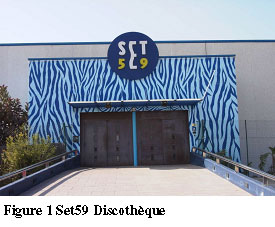Richard J. Peppin - peppinR@Scantekinc.com
Scantek Inc., Columbia, MD USA
Joan Casamajó
DICESVA, Barcelona, Spain
Popular version of paper 3aNSb5
Presented Wednesday morning, April 7, 2003
145th ASA Meeting, Nashville, TN
Community noise is one of the prices we pay for a society that uses more and more energy as part of its living conditions. As we use more power, one of the side effects is increased noise. Nowhere is this more evident than the pervasive nature of roadway and aircraft noise. Next might be noise from air-conditioning systems and other mechanical equipment.
But some noise we make intentionally and it seems the noise from nightclubs, discos, exercise studios, theme parks, fairgrounds, and automobile dealership loudspeakers is one of the most widespread causes of citizens' complaints.
Noise that is expected, like air conditioner noise, can often be controlled
simply. Barriers, maintenance, judicious site location, and noise abatement
measures are some techniques manufacturers and acoustical engineers use to keep
the  equipment within acceptable levels.
But entertainment noise, and other similarly generated noises, is unique. Mostly,
the producer of the noise, such as a DJ, for example, has complete control of
the volume and can often cater the volume to the preferences of him/herself
or the audience. As a result the noise perceived by the community may or may
not exceed local noise limits, depending on the whim of the operator. In addition
the sound frequency spectrum changes almost instantaneously because of the nature
of the music, so the A-weighted noise level at the property line, a very common
descriptor of community noise, can vary because of changes in level or changes
in spectrum.
equipment within acceptable levels.
But entertainment noise, and other similarly generated noises, is unique. Mostly,
the producer of the noise, such as a DJ, for example, has complete control of
the volume and can often cater the volume to the preferences of him/herself
or the audience. As a result the noise perceived by the community may or may
not exceed local noise limits, depending on the whim of the operator. In addition
the sound frequency spectrum changes almost instantaneously because of the nature
of the music, so the A-weighted noise level at the property line, a very common
descriptor of community noise, can vary because of changes in level or changes
in spectrum.
DICESVA, an acoustical instrument company from Spain, developed a very capable device to handle this problem. It is simple to use too and, even better, indicates when and if, it was tampered with to assure compliance. Here's how it works:

Now this control system does not depend on the skill of a DJ, the level of amplifiers, or the need for a community noise inspector to be at the site to record the violations. Thiscost-effective solution is used in hundreds of discos in Europe. Its potential for noise control in the USA is great.